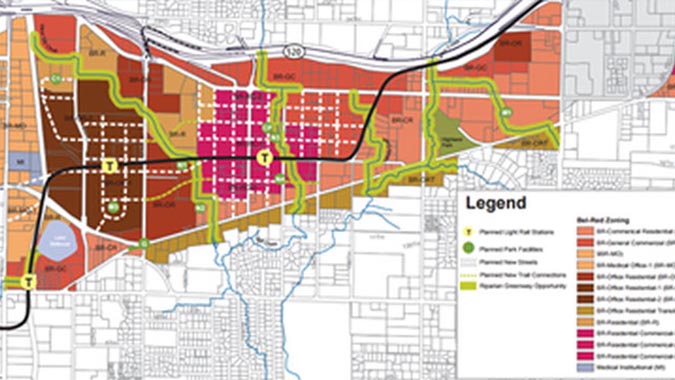
photo credit: City of Bellevue
| Location | Bellevue, Washington |
|---|---|
| Project Sponsor / Borrower | City of Bellevue |
| Program Areas |
|
| Value Capture Techniques | Development Impact Fees / Mobility Impact Fees Private Contribution Local Improvement District Tax Increment Financing |
| Mode | Local Road |
| Description | The BelRed Street Network is part of BelRed Transformation, a plan for redevelopment and economic growth within a 900-acre area between downtown Bellevue and Overlake/Microsoft, 10 miles east of Seattle, Washington. The BelRed Corridor is bound by SR 520 to the north, I-405 to the west, Bel-Red Road to the south, and 148th Avenue to the east. The area has been a major employment center for the surrounding region. However in response to the departure of several major employers due to changing market conditions, the City of Bellevue sought to develop a new vision for growth and economic development. BelRed had been characterized by light industrial zoning and significant areas of underutilized land, uninviting streetscapes, unhealthy streams and wetlands, and limited transportation options. Leveraging the East Link Extension light rail transit service under construction between downtown Seattle and Redmond, east of Bellevue, BelRed will be anchored by transit-oriented development around two stations in the corridor. By 2030, BelRed is expected to generate:
The BelRed Street Network is a combination of 12 multimodal roadways to support development of the new BelRed neighborhood. In tandem with the East Link light rail, the project will provide multimodal mobility enhancements that are expected to improve access to transit, reduce travel times, and improve access to employment. Roadway improvements include new connections, realignments, widenings, turn pockets, new and upgraded signals, bike lanes, sidewalks, landscaping, drainage, and street lighting. |
| Cost | Total project cost - $323.2 million ($301.86 - TIFIA eligible project costs) |
| Funding Sources | City of Bellevue (tax increment financing, special assessment, development impact fees) - $158.9 million TIFIA loan - $99.6 million Sound Transit - $22.4 million Federal grant - $22.1 million State grant - $17.6 million Private contributions - $2.6 million |
| Project Delivery / Contract Method | Design-bid-build |
| Private Partner | None |
| Project Advisors / Consultants | To the City of Bellevue
To USDOT Build America Bureau
|
| Lenders | USDOT TIFIA |
| Duration / Status | A first set of improvements was complete in late 2014. The project is estimated to be substantially complete in 2022. |
| TIFIA Credit Assistance | Direct Loan - $99.6 million The TIFIA loan is secured by a limited tax general obligation pledge of the City of Bellevue. |
| Financial Status | The TIFIA Loan Agreement was executed on June 9, 2017, and is expected to mature in 2056. |
| Innovations |
|
| Related Links / Articles | |
| Contacts | Ron Kessack |